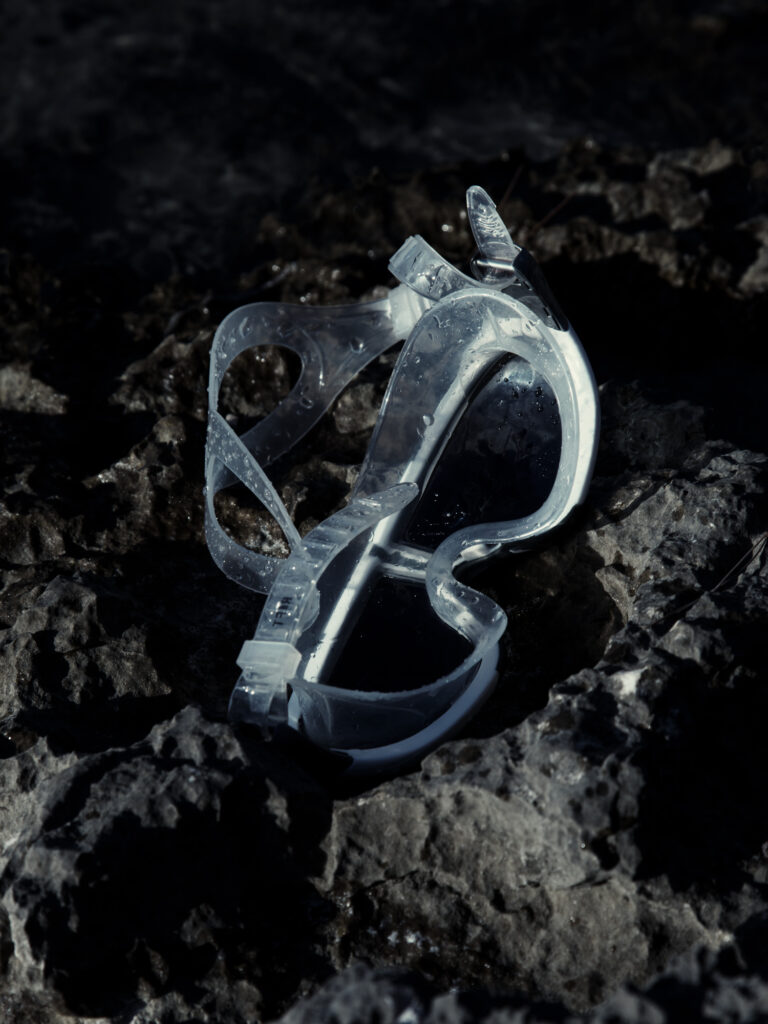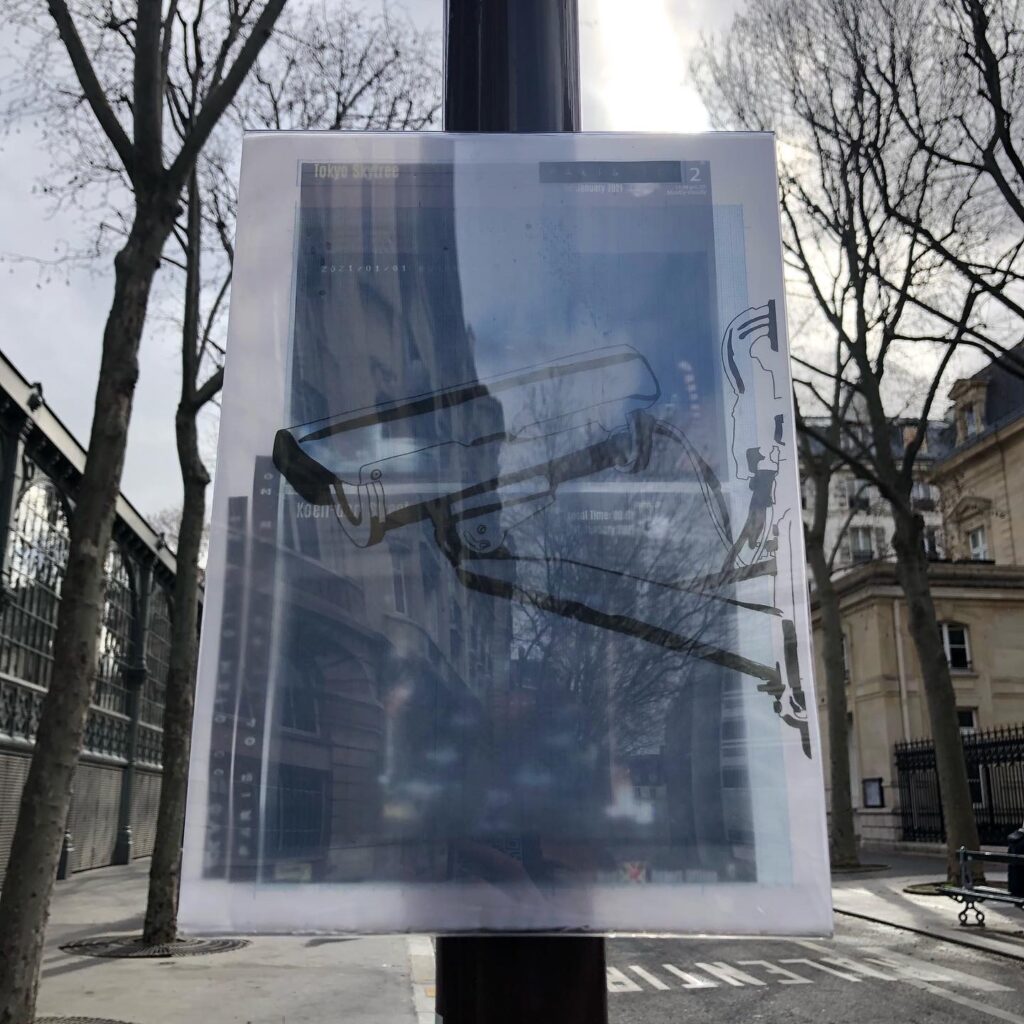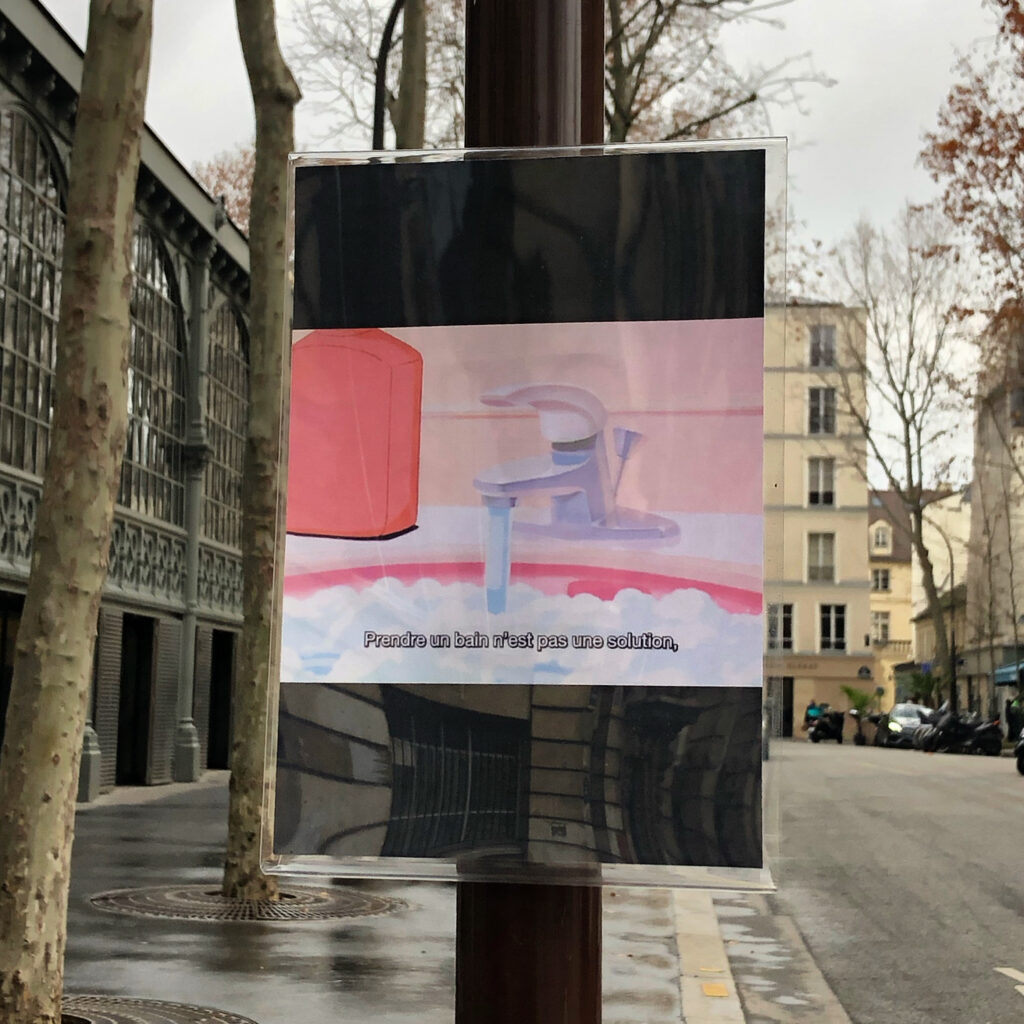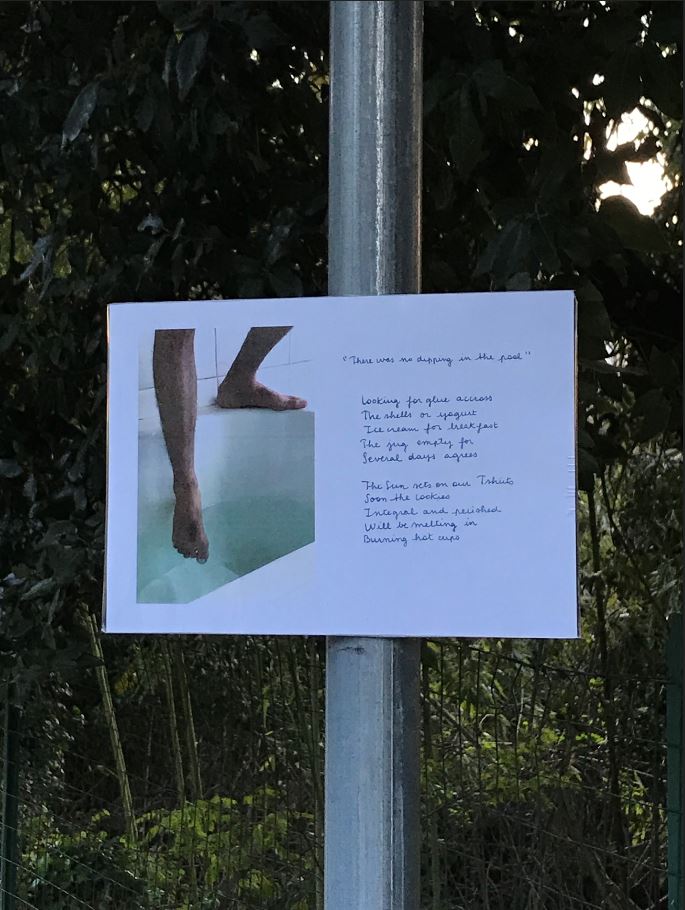The Pole Gallery. Moments of Being
 Virginia Woolf described a “moment of being” as a moment in which an individual experiences a sense of reality in contrast to the “non-being” states that dominate most of an individual’s conscious life, in which they are separated from reality by a protective covering.
Virginia Woolf described a “moment of being” as a moment in which an individual experiences a sense of reality in contrast to the “non-being” states that dominate most of an individual’s conscious life, in which they are separated from reality by a protective covering.
I have been thinking about Woolf’s words over the past few months, and one project that has recently impressed me is The Pole Gallery, first launched in London just over a year ago by Anglo-American artist Orfeo Tagiuri. In Paris, it opened in November 2020 after curator Francesca Sabatini thought the ville lumière deserved a Pole Gallery, too.
The Pole Gallery space very simply consists of an A4 plexiglass frame attached to a pole in the street. The unwritten mission of the gallery is threefold: to emancipate the presentation of art from the enclosed (literally closed right now, due to the pandemic) space of the gallery, to allow a return to the joy of art in a smaller format, and to create the possibility of unplanned encounters with art – rather than imposing it on viewers as in the gallery/museum context.
While I was discussing with the Gallery curator in Paris, I found myself thinking about the possibility of poetic way of “squatting”: occupying space with art to install and claim new artistic statements, constantly looking for new up-and-coming dimensions to produce and observe contemporary art. Even if the concept is quite simple, both the London and Paris galleries are surprisingly harmoniously designed and set, speaking and conveying similar languages and ideas. Their demeanor reflects this new “poetic-squat” approach to visual culture, both in terms of content and through the human relationship between curators and artists.

Each artist’s work is exhibited in the A4 plexiglass frame for ten days. Based on everyone’s practice and wishes, from 1 piece to multiple pieces over the course of 10 days. Each exhibited artwork is published on the official Instagram account (@thepolegallery and @thepolegallery_paris) in 3 posts: 1 HD image, 1 photo of the installed work, and 1 short video of what happens around the pole. In Paris, Francesca Sabatini wishes to publish the first catalog at the end of this year, while in London Orfeo Tagiuri has already published two zines.
Empathy is the reason and drive behind each of the selected artists’ projects, such as Valerian Goalec, Richard Tinkler, Jules Rivemale, Samy Rio, and Anna Iris Luneman. Such engagement is now taking a step further: in Tokyo with artist Hélène Lauth and her Wonderings, a double camera recording installation; in Milan with the site-specific Silvana and a squirrel by Jean Nipon in front of Bar Basso; in Palaia (Italy) with Haydée Touitou and Neige Augusta Céleste Thébault, in collaboration with Galleria del Paletto.

Online or in reality, the visitors discover the power of The Pole Gallery to frame the reality of art, to the point of creating an invasion of vibrant images in London and Paris after months of silence. A new inward and lyrical system of approaching art gallery visits, also capable of restoring artists’ voices in our new everyday lives. The Pole Gallery doesn’t have a Manifesto. It is intended as an art project consisting of a series of fast, storytelling solo exhibitions, that I hope will take place in more and more locations around the world, art centers or bars.
The second main theme of Pole Gallery is imagination. It pervades the whole selection of works and it can be recognized rather clearly in different pieces of art, such as Losers, a short movie directed by Roch Deniau with a screenplay by Virginie Huet. Calling up other possible worlds implies the creation of imaginary scenarios in which desire – in reality quite confined/suffocated – can spread free and actually be fulfilled.

Identification is also closely tied to narrative empathy to experience the same feelings and perspectives as other people in different situations, even in our familiar urban landscape. Sometimes art curators have the ability to bring our needs and vision to life – and the Pole Gallery surely does. It smoothly creates a secret interlude, an escape from the greedy city routine, and an open-door for a new reflection, a “moment of being” far from the secret events of the moment.
The Pole Gallery is writing a new page for young artists, where the relationship with the spectators is not defined in terms of criticism or confrontation, but with imagination and empathy. The gallery in Paris is located in the square of Carreau du Temple in the 3rd arrondissement. In London you can find it at 50 Goldborne Road, around Portobello Road. I’m attached to this project because I hope it can awaken and spark a real desire for art: contemporary art is not only made of interpersonal relationships, but at the moment I don’t feel like thinking about anything else.
by Daniele Bellonio
edited by Cecilia Siccardi
